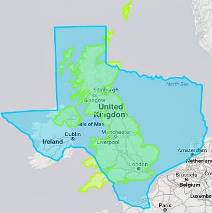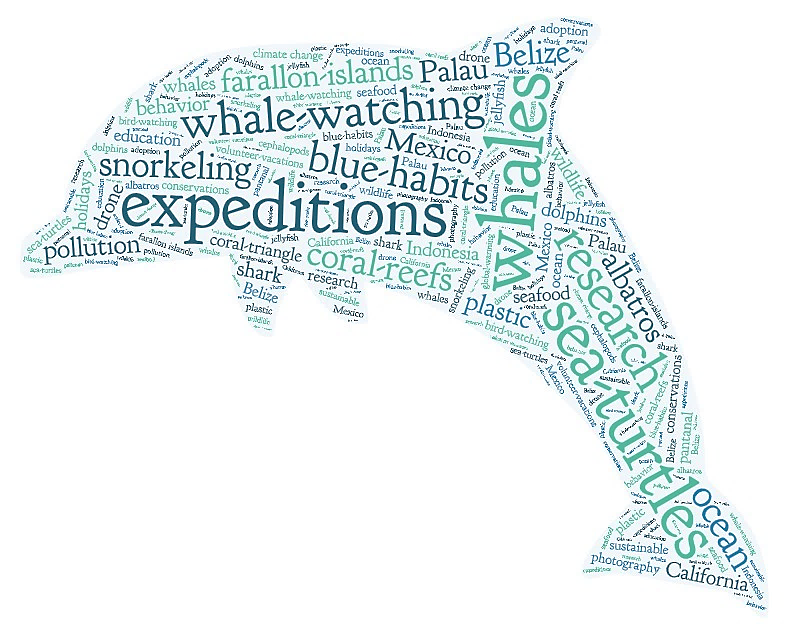Teaching for the Future: The Five Frames of Mind for Sustainable Development
Stefania Ballotto is a Pilgrims Teacher Trainer, and university lecturer. She is a South-African - Italian currently based in Italy. Stefania trains and gives talks at conferences and workshops in many countries including Turkey, China, Greece, Romania, and Slovakia. Her main interest of study is Applied Linguistics, applied in our times. Email: sballotto@gmail.com

Introduction
Traditional education gives students few opportunities to explore, understand, and solve real world problems. As life-long learning becomes more important around the world, we enrich our learning beyond language. In terms of social responsibility, we develop empathy, 21st Century Skills such as digital skills, innovation and creativity.
The Sustainable Development Goals or Global Goals are a collection of 17 interlinked global goals designed to be a "blueprint to achieve a better and more sustainable future for all". The SDGs were set up in 2015 by the United Nations General Assembly and are intended to be achieved by the year 2030.
Our world is facing many challenges and there are many ways that we can improve to improve it. These challenges are big and complicated, so they have no easy solutions. Since they affect all of us, let’s call them global challenges.
Sustainable Development Goal no.14 – Life Below Water, is the goal that we’ll be looking at;
to raise awareness of the value of the ocean and celebrate its beauty and diversity, for students to understand how people pollute the ocean and enable them to see a vision for the future of oceans,
The activities thus provide, cognition – discussion and analysis of problems facing the oceans, and the affect – a positive vision of and feelings towards the oceans and the life they contain, and creativity. It also enhances language use by encouraging varied forms of expression. Research on activities and creativity has shown that such activities encourage learners to engage more deeply with the subject matter and produce richer language.
When we are teaching using a framework, for approaching thinking challenges from different perspectives we notice how Multiple Intelligence ideas have proved particularly congenial with the goal of “Education for deep Understanding” (Gardner 2006). The theory of Multiple Intelligence suggests that we should not consider the human brain as one big computer. The human brain should be considered as a collection of multiple computers. This theory identifies seven/ eight distinct intelligences. In his book “Five Minds for the Future”, Howard Gardner outlines the kind of mental abilities and competences that will be critical to success in the 21st. century. He suggests that “five minds encapsulating skills, values, attitude and knowledge are crucial”
Topics which are real issues empower our learners and therefore we need to think about the specific challenges we are facing and explore how we can apply the framework to the challenge.
How can teaching English embrace in integrating the universal goals to help students develop insights into issues around the world?
The 17 Sustainable Development Goals can be used as a framework and tool to develop their:
- Research
- Critical thinking
- Problem solving
- Teamwork
- Communication
The Five Minds for the Future
The Five Minds suggest a framework for approaching thinking challenges from different perspectives.and reforms our thinking about education.
- The Respectful mind helps us balance our perspective creating a safe space where we can discover our «being of the same kind». Here difference is intrinsically valuable.
- The Synthesising mind seeks out opportunities for synthesis and then experiments to find new levels of perspective and understanding. Interdisciplinary pathways and connections. It relates to narrative, metaphors, and taxonomy.
- The Creating mind relates to dream and vision as well as flow and form. The creative mind brings our world into existence every moment. It is a creative process, observing, reflecting and art.
- The Disciplined mind relates to mastering new challenges and intentionally intruding upon and interrupting one’s comfortable habits. It develops habits and attitudes that enables to continuously refine and improve methods and frameworks of creating knowledge and maintaining wellbeing.
- The Ethical mind enables ethical thinking and ethical actions promoting the greatest depth (level of development) for the greatest span (numbers of beings affected). It involves decision making, expansion of consciousness and judgement.
Life below water
In this lesson plan I will be referring to Goal No 14 - Life below water.
Activity 1
As an initial activity is to view https://www.youtube.com/watch?v=1qT-rOXB6NI and as an entry point (ethical mind).
To raise the awareness and to understand how people pollute the ocean and how we can become responsible citizens, and celebrate the beauty and value of the world, and life below water.
Some of our learners might be surprised and incredulous by seeing the size of the Great Garbage Patch and realising that it is twice the size of Texas. This will trigger off feelings and generate language. The learners research the size of the patch compared to countries or states and realise how very important it is to become more and more aware of recycling, for example, of respecting the environment and becoming a responsible citizen.

Activity 2: In the Garbage Patch- An Autobiography
As an entry point (respectful mind) where we discover “our own being” and show respect for the difference the learners are asked to write an autobiography by taking the perspective of an object found in the Garbage Patch, a straw for example.
Choose an object and write an autobiography with a sad ending, for example a turtle eats a straw thinking it is an algae.
A model as a frame.
I am a pink plastic straw. I was made in Taiwan, in a big factory. Two years ago, my twenty sisters and I were sent to Australia.
On day, Rosie and her mother bought us in a supermarket. They went to the beach and Rosie used me to drink her fruit juice. She left me on the beach and went swimming! The high tide dragged me into the ocean and my journey started. I saw amazing colourful fish and corals. I have been floating around for many years now! I hope the beautiful sea turtles I meet won’t eat me. I may harm them and cause their death.
I hope my sisters are together in a recycling bin and that Rosie remembers not to leave one of us alone again.
Activity 3: 7 Ways to Reduce Ocean Plastic Pollution Today
The following activity has an entry point to expand and develop the synthesing mind find taxonomies and new levels of understanding.
The following website is given, and learners are asked to read and collect the words in a word cloud which they create using and developing the tech skills.

Example: This is a reading activity. 7 Ways to Reduce Ocean Plastic Pollution Today by Brian Hutchinson
https://www.oceanicsociety.org/resources/7-ways-to-reduce-ocean-plastic-pollution-today/
In the above updated article, July 28-2020 the learners are introduced to numerous other web-sites where the reader begins to develop new visions, communicates them, and contemplates how to realise these innovations. The learners synthesises the current state of knowledge, incorporating new findings, and delineating new dilemmas is part of the parcel of the study.
Activity to develop the creative mind through vision and dreams, flow, and form. We develop the creative process by observing and reflecting.
Activity 4: Moana meets the Ocean
This is a short 3 minute video from the cartoon, “Moana. Here for the first time the little girl meets the ocean and some of its creatures. It is silent yet speaks aloud. The beauty, and the mystery of life below water are beautifully shown and the human brain can simply envision breath-taking images of the ocean which many take for granted.
https://www.youtube.com/watch?v=KGqBfyQFG_g
In the activity I suggest, the learner to get into Moana’s shoes and describe the ocean from her perspective, what she can see and what she feels,
This creative writing activity involves a presentation of the ocean through the eyes of a child, a dream, a conversation between Moana and a sea turtle who has just been saved…
Get into the flow and enjoy what we have been given , and share the feelings with the group.
Activity 5
The entry point disciplined mind is challenging our learners to step out of their comfort zone, update their knowledge and to master new challenges and using this as a framework of creating knowledge and maintain wellbeing.
- Engage your community. Learn more. Change your habits.
- Spend time in nature with friends: go to the beach, birdwatch…
- Join or organise activities with your community.
What other human activities are affecting the environment?
- Join a coastal clean-up day and help to keep litter out of our oceans.
- Avoid using single-use plastic products, like straws, which end up polluting oceans and the land.
Please check the Environmental Studies Through Language Teaching course at Pilgrims website.
Please check the CLIL for Primary Teachers course at Pilgrims website.
Please check the Enhancing Language Learning through Creativity course at Pilgrims website.
Teaching for the Future: The Five Frames of Mind for Sustainable Development
Stefania Balotto, ItalyEcology and Naturalistic Intelligence presented through Storytelling: The Story of Wollemia Nobilis (Wollemi Pine)
Mojca Belak, Slovenia